Everything You Need To Know About Hash
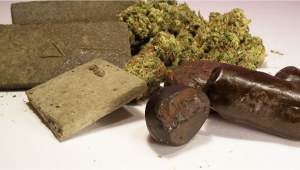
- 1. What is hashish?
- 2. The history of hashish
- 2. a. Hash and tobacco
- 3. The history of hash making: ketama drums and charas
- 3. a. The ketama drums
- 3. b. Charas
- 4. How is hash made nowadays
- 4. a. How to make hash : dry sift
- 4. b. How to make hash : water hash or bubble hash
- 4. c. How to make hash : dry ice hash
- 5. Best and worst grades of hash
- 6. Using your washer to make hash
- 7. What's the difference: hash vs weed
- 8. Tips for keeping your hash mold-free
- 9. Hash in the current era
- 10. In conclusion
Hashish originates from cannabis seeds, obviously, but its exact origins are still a mystery, although we know it originated thousands of years ago because of its religious and medical uses by Arabic cultures. This concentrate quickly spread around the world, mainly in Europe which is the biggest hash consumer nowadays. Read along to learn more about hash vs weed, how to make hash and much, much more!
1. What is Hashish?
Hashish comes from the process of separating the trichomes which are the resin glands that contain all of the compounds such as terpenes, cannabinoids, and flavonoids, found in the cannabis plant, by doing this process, you end up with a mass of pure trichomes which is way stronger than cannabis buds.
This process that achieves the separation of the resin has been practiced for centuries and has been used for several different reasons all over the world.
2. The History Of Hashish
We could say that the history of hash is as long as the history of cannabis because hashish is made from the trichomes found on cannabis plants, for thousands of years, cannabis plants have been used for their medicinal benefit and the fibers which are super strong were used to make strong fabric.
The most interesting part about hash is how little we really know about the origins. You will see plenty of speculation online but we have no clear date but we can guess it was around 9000 BCE in India. The oldest way of making this 9000 BCE hash was very simple yet effective. The way the people would extract the trichomes was to wear woven leather sleeves on the inside of their forearm and they would walk through the cannabis garden with their arms extended gently brushing up against the flowers of the cannabis plant.
Once they were done walking the garden there would be a load of oil glands all over the leather sleeves on their arms. Now to remove all of those trichomes off of the leather sleeves a small metal knife was needed to scrape off the oil glands. The reason they didn't use their hands to scrape off the trichomes is that working with sticky resinous hands is extremely hard and there is a degradation of the hash. The heat and pressure from your hands will cause trichomes to dissipate or burst, leaving you with less of that delicious smell and taste.
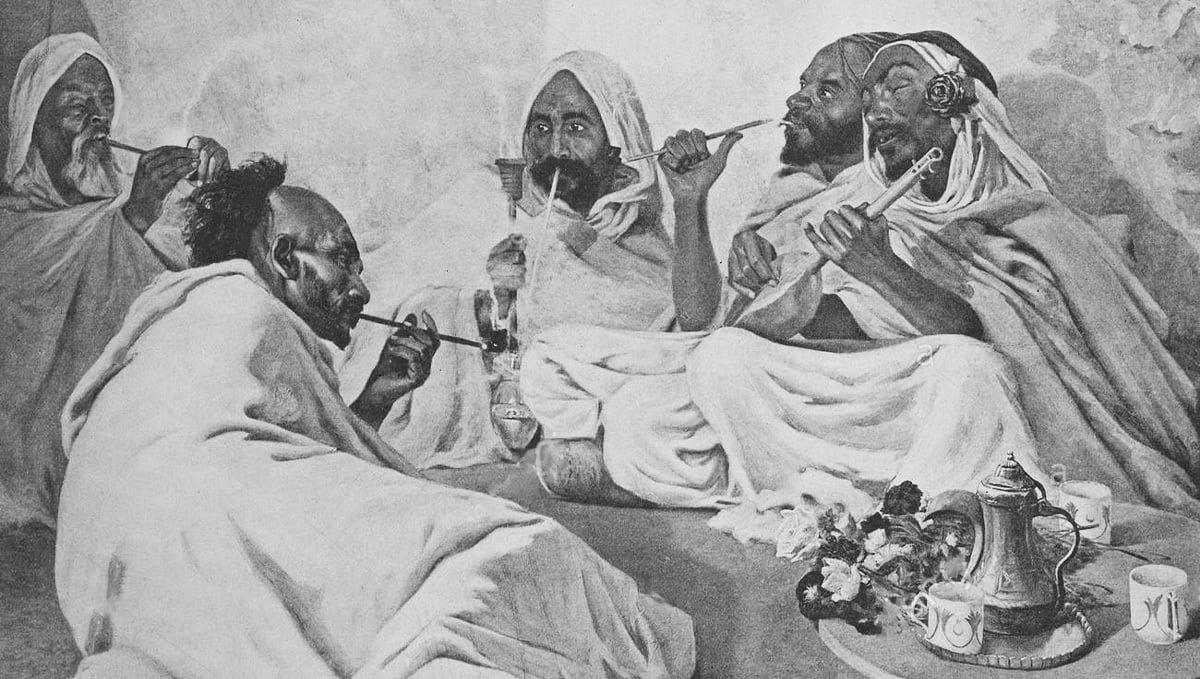
It’s hard to say exactly when hashish appeared but there are records that date back to 900 AD in Arabia, by then, hashish was consumed by eating it and was already widely spread. Also, there are references to hashish in literature, for example, in “The Tale of the Hashish Eater” from the 1001 Arabian Tales which is a story about a man that spent all his money on women and ate hashish to dream about being rich again.
As hash spread, more stories came up, such as the legend of hashashins (assassins) that originated between 1000-1200 AD. The legend says that Persian assassins use to smoke hash before going out on a mission and a lot of historians say that’s where the word hashish originated from.
By 1300 AD, Marco Polo confirmed stories about not only the hashashins consuming hashish but also that hash-using was widespread all over, which left everyone in Europe quite curious about this concentrate.
Fast forward to 1800, hashish has made its way to Europe, mainly because of the exposure of troops to hashish during their campaigns in Egypt, and as hashish became more known, Europe’s interest grew as doctors and botanists started promoting the benefits of hashish.
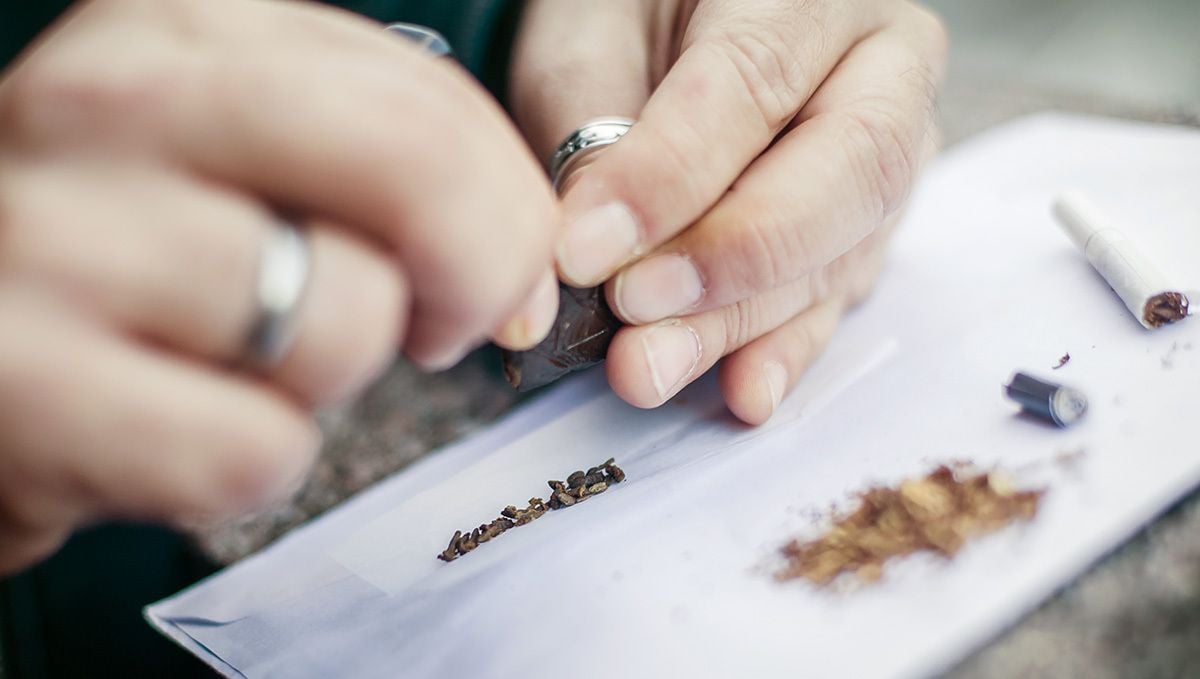
In 1839, a doctor stationed in India published a paper on the uses of cannabis and hashish, which he considered effective in the treatment of a number of diseases; A year later, several doctors started using hashish to treat their diseases and started recommending it to their patients, and in a couple of years, hashish use in Europe increased a lot.
When this happened, the demand for hashish was very high so the drug sale increased and led to people asking is hashish addictive? Soon, they discovered that hashish itself wasn’t addictive but due to the decline in quality and a variation in potency, could lead to drug addiction and mental health problems.
In the nineteenth century, as the dangers of has use spread, people were more aware of the possible dangers of using it frequently and this resulted in alternatives to hashish such as vaccines, aspirin, and chloral hydrate, which led to a decline of hashish use, although it’s still widely used in religious ritual, for its medicinal benefits and recreationally all over the world.
Hash and Tobacco
Hash wasn't always smoked like how it is done in more recent years. While smoking may be one of the most effective ways to consume hash, it didn't become popular until around 5000-3000 BCE. Smoking plants or herbs was not really a thing until the Europeans discovered tobacco, even though tobacco was discovered and smoked by Europeans before 5000 BCE it took a while before it was able to reach other parts of the world like Mesopotamia. So once tobacco use started to flourish all over the world that is when people realized they could smoke the cannabis plant as well.
3. The History Of Hash Making: Ketama Drums and Charas
As you may know by now, hash does not come from one place, due to its several uses, people have come up with several ways of making it. So how to make hash? There are several ways.
The Ketama Drums
Morocco is among the largest producers of hashish, and in a small town of no more than 1500 inhabitants, there’s a land of over 10km where cannabis grows freely; This town is known as Ketama and it’s said that’s where some of the best hashish in the world comes from.
Ketama has been producing hashish since the fifteenth century, producing a concentrate with the best flavors and quality, but you might be asking yourself How is this hashish made? Well...here’s how.
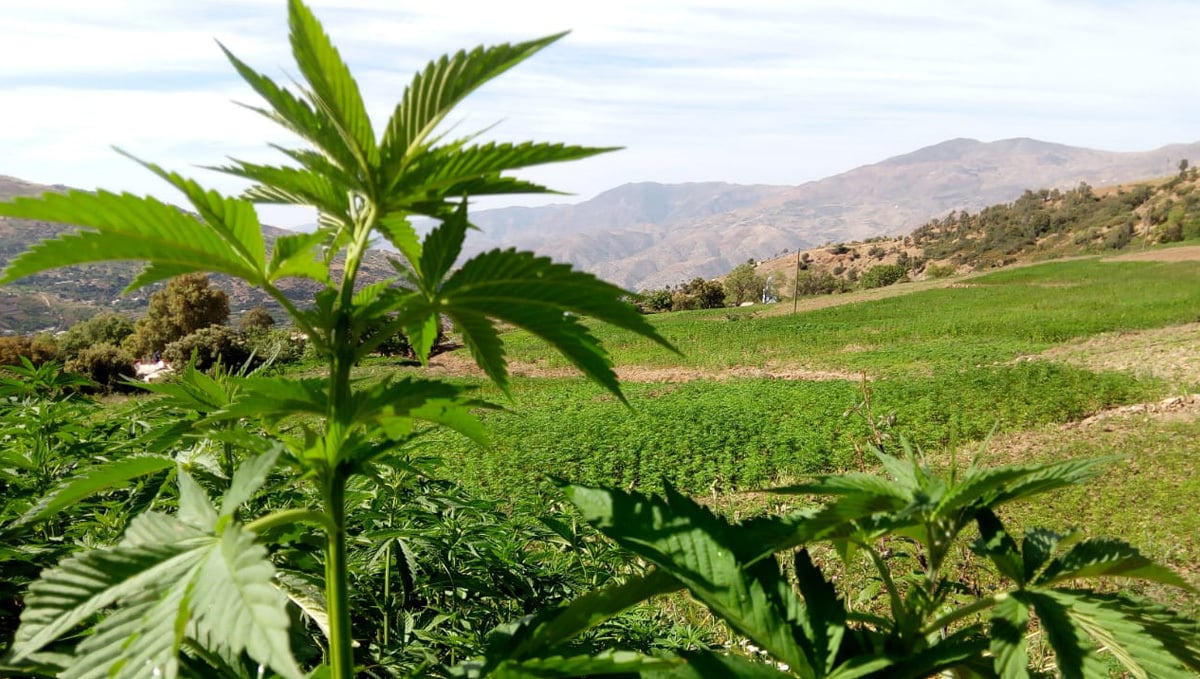
The Berbers which are the hashish producers of this area dry the cannabis outdoors when it’s cold so the resin comes out easily, they use simple plastic buckets which they cover with a nylon mesh to cover the buckets, then place the cannabis on top, and then cover the cannabis so that the resin doesn’t escape.
After having everything in place, they use wooden sticks to pound the cannabis just like you would do it on a drum (hence the name), this process is a tradition in which the whole family participates and it’s essential for their survival because they depend on the money that comes from the selling of this hash to be able to live.
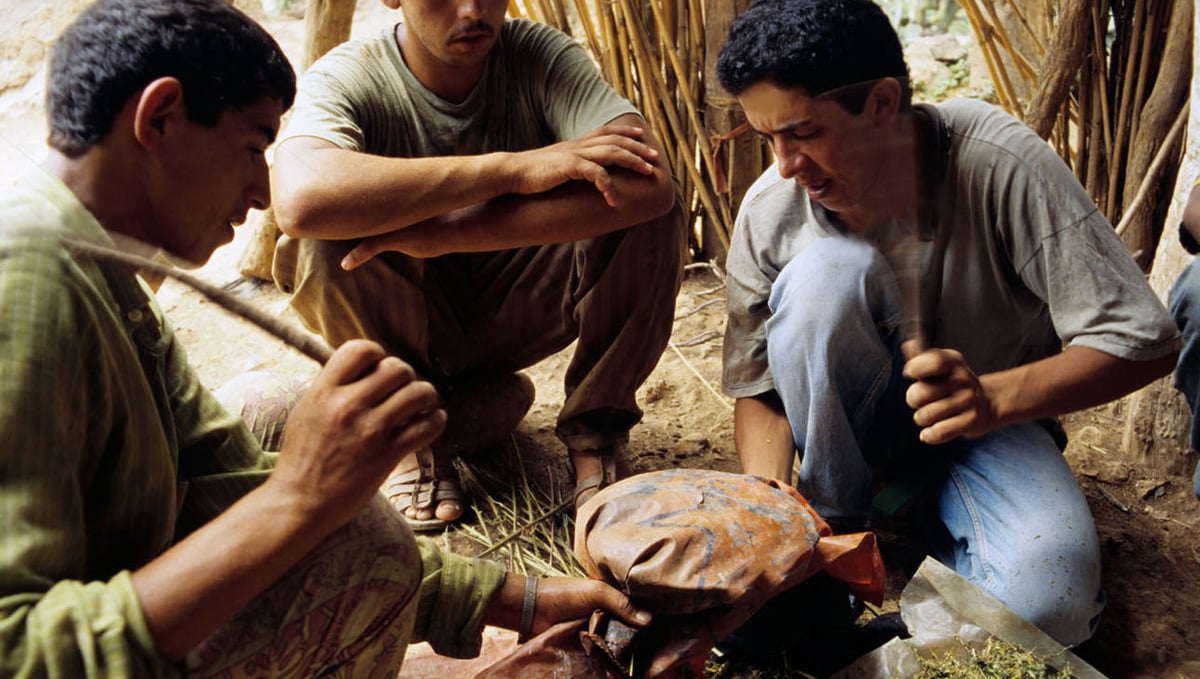
According to the tradition, there are two ways of finishing the hash, one is by using heat to activate the compounds and then turn it into the hash we know which ends up dark brown and is the hash that is usually exported, and the other one is to freeze the “ pollen” which ends up basically like kief.
Charas
Charas is basically hashish but it's handmade mainly in Afghanistan, Pakistan, Nepal, and India, and it’s one of the most used drugs in India.
This concentrate is similar to Ketama hash, for example, but unlike Ketama hashish, Charaas is made with the resin from fresh cannabis plants.
Making charas is relatively simple because it’s made by rubbing cannabis plants in the hands, but even though it may be simple, is quite time consuming; It takes around 8 hours to produce around 7g of hash, however, the slower the rubbing, the higher the quality of the final product
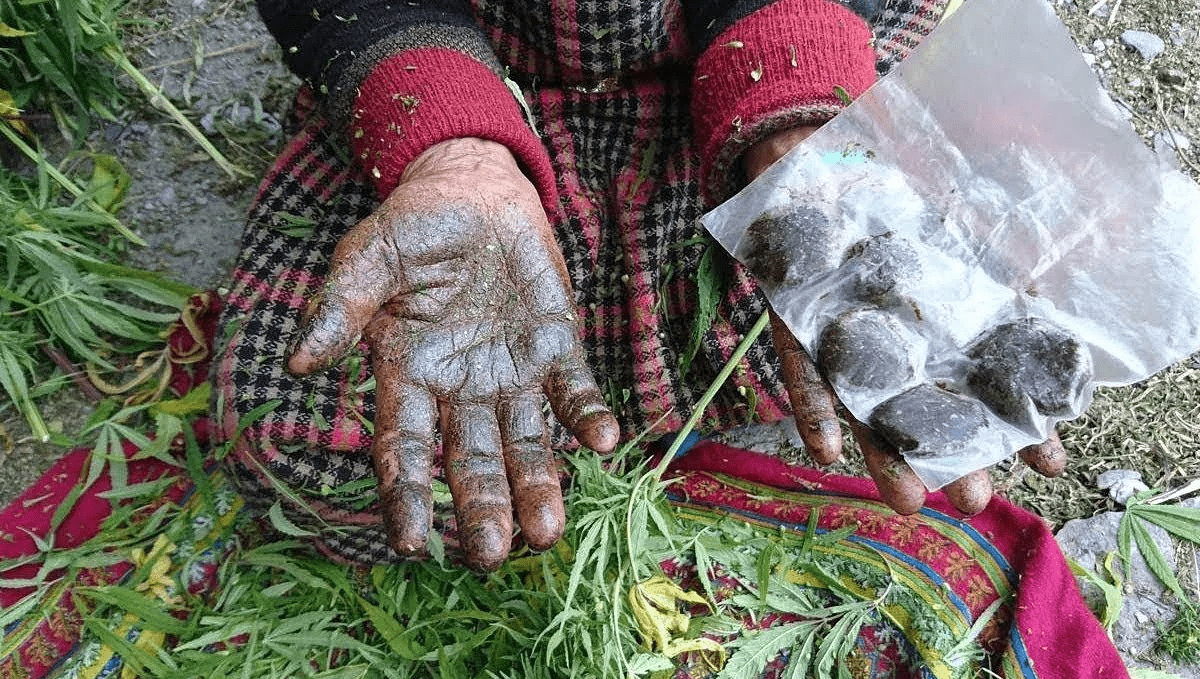
The Charas makers that follow the tradition make it by choosing the best buds from living plants, rip off the larger fan leaves and then rub the buds gently between their hands to get the resin to stick to the skin, once a thick layer of hashish covers the palms, they scrape it, press it to activate the compounds and then roll it into balls.
Now, there are other ways of making Charas, for example, some producers dress in leather and walk among cannabis plants so that the trichomes stick on the leather, although, as said above, handmade Charas is made with selected buds, and the slower the better so this method may end up in a lower quality product.

Charas can also be found as temple balls, which are basically the same but a heated ceramic plate is used to roll the charas ball around and not only activate the compounds but also give it the shiny coat that every hash consumer knows.
4. How Is Hash Made Nowadays
As it happens with everything, people have adapted hashish-making to their realities and the process of hash-making has evolved a lot so here are the most used methods by hashish producers nowadays.
How to make hash : Dry sift
The process of making dry sift hash is very similar to the way hashish is made in Ketama, this process consists of rubbing cannabis on a nylon mesh, this way the resin can pass through while the plant material doesn’t.
The way dry sift is made, starts by spreading dry cannabis on a nylon screen or mesh, after spreading it, you will have to rub the cannabis on the mesh for a couple of minutes until you see a good amount of kief on the bottom.
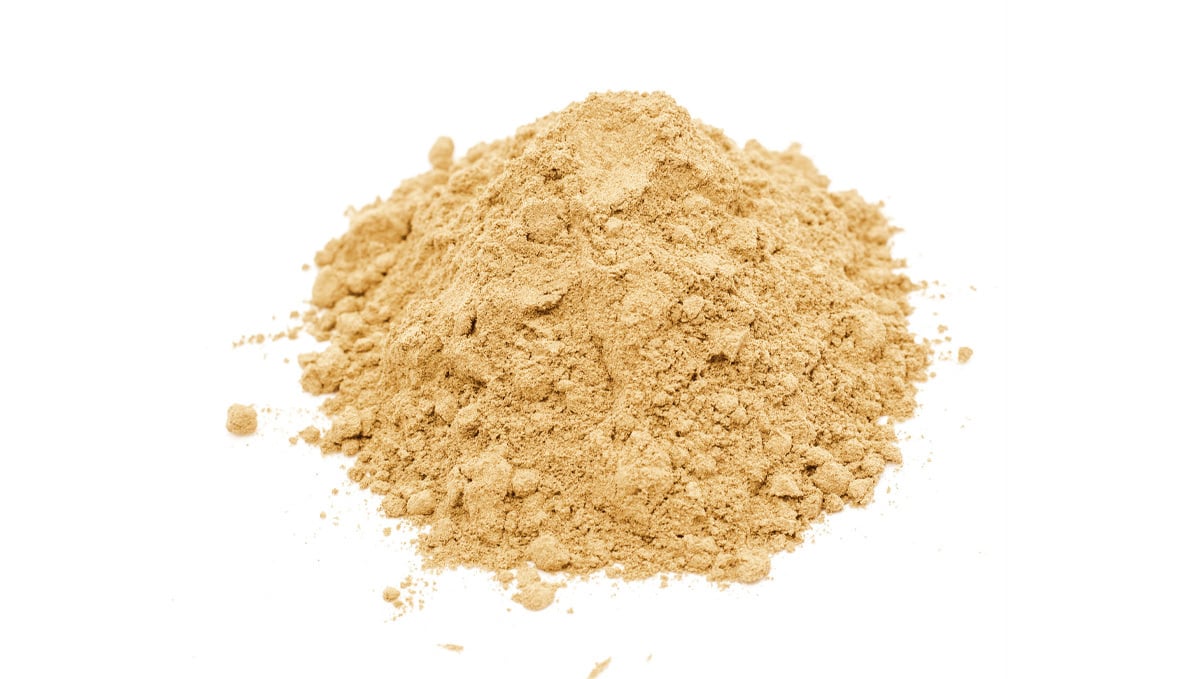
Now, you can repeat this process up to 3 times, but the quality will be diminished after every run, once you’re happy with the amount of kief produced, you can use a credit card to collect it.
This way you end up with kief, now, if you want to turn it into hashish, you should press it with a pollen press or apply heat in any other way you prefer.
How to make hash : Water Hash or Bubble Hash
Water hash is another way to make hashish. When teaching people about water hash we prefer to call it ice water hash so people can get a good visual of how it's actually made. Now you can do it manually or use “hash washer”, either way, both of them use water, ice, and agitation to separate the trichomes from the plant material.
The water and cannabis are first frozen to make it easier to remove the resin and it’s then agitated to remove the trichomes which sink while the plant material floats, this water is then poured through several filtration bags (similar to the nylon mesh used in dry sift) which separates the trichomes by size.
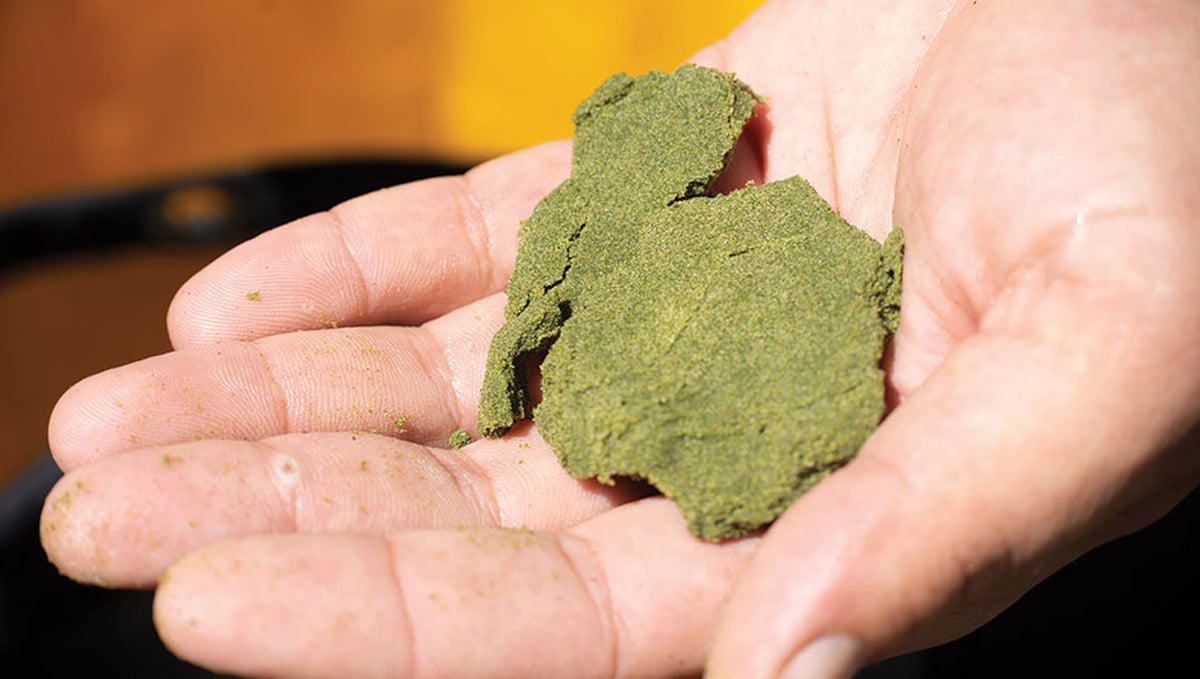
Once the trichomes are collected in the filtration bags, it’s separated by quality (thus the filtration bags) and is then dried and ready to be consumed, but just like when dry sifting, the end results are similar to kief and you should press it or apply heat to turn it into the brown hash we all know.
How to make hash : Dry Ice Hash
Dry ice hashish is basically a combination of water hash and dry sift, this process consists of using the bubble bags you would use when making water hash and following the process used when making dry sift.
To make dry ice hash, you just need to freeze your cannabis and place it inside the filtration bag of your preference, along with the dry ice.
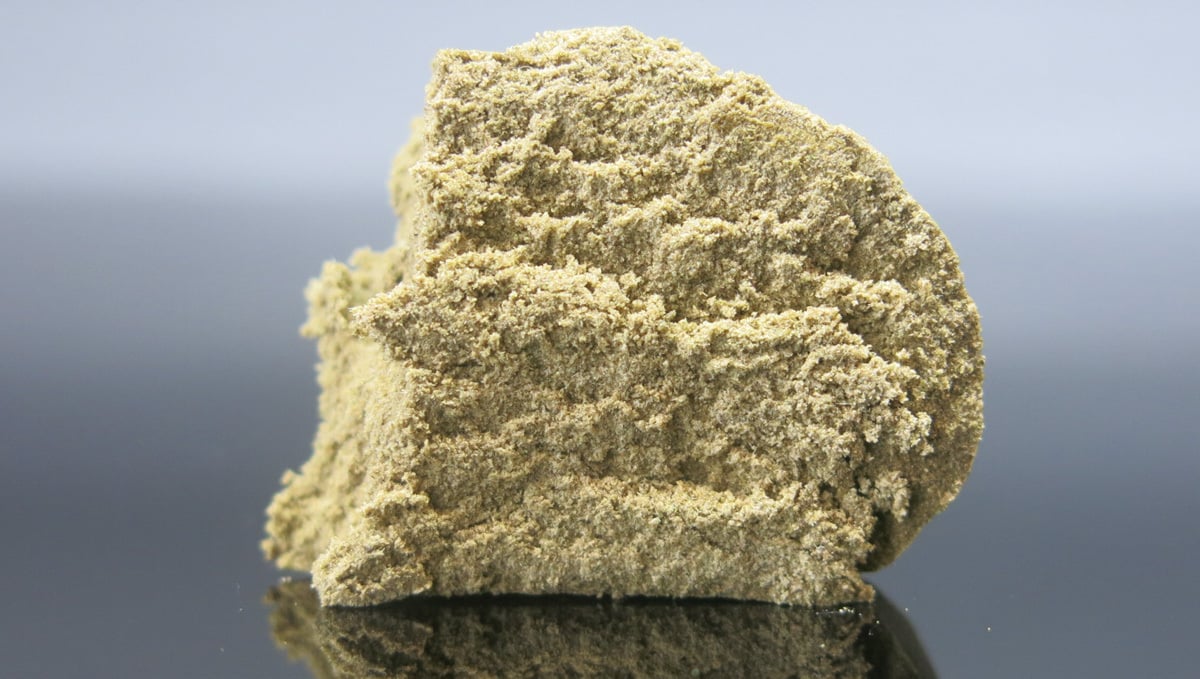
This way, the dry ice will make it easy to remove the trichomes from the plant material, and by shaking it, you separate the resin glands from your cannabis, the trichomes will then pass through the filters and you’ll end up with a product similar to what you would get with dry sift and water hash.
And, as said before, if you want to make the brown has we all know, you will have to press it and apply heat but you don’t need to make hash, you can also make hash oil with the kief, which is another whole process that you should look into if that’s what you wish to do.
5. Best and Worst Grades of Hash
Yes, just like high-quality steaks, hash has a grading system to determine the quality. The different grade hashes are to be used for different things.
One and two-star hash
- These are the two worst hashes
- High content of plant material/very dark or green
- Also known as farmer grade hash
- Often used for edibles
Three and four-star hash
- Good step up from one and two star
- Still has small amount of plant material
- Known as half melt hash
- Great use for half melt is as a bowl topper or with a larger quantity it is usually pressed into amazing hash rosin
Five and Six-star hash
- Best quality hash you can buy or make
- No plant material whatsoever, strictly trichome heads
- Known as full melt hash
- Best when dabbed at a low temperature to get the full flavor
- Six-star hash should never leave any residue on your banger
6. Using Your Washer To Make Hash
If you want to make water hashish but can’t afford or can’t find a “hash washer”, you can use your regular washer, although it’s not recommended if you want to make high-quality hash, you can get away if you are making it for your own consumption.
Here’s a step-by-step to help you make hash in your washer!
Step 1
Make sure everything is clean and fill the washer with cold water and ice, you should use around 20-40 liters of water and 1.5-2.5kg of ice, depending on the size of your home washer.
Step 2
Place your cannabis in the washer, use a filter bag with a zipper so you’re able to close it, and don’t risk losing precious resin.
Step 3
Add ice on top of the filter bag to keep the cannabis submerged while the washer agitates it.

Step 4
Let the cannabis hydrate for 5min and turn on the washer for 10-20min and have your filter bags setup into a bucket if you want to separate the resin by size.
Step 5
Make sure the drain tube is placed into the filter bags so that the water drains into the buckets, once you’ve done this, rinse the filter bags so the material concentrates in the center.
Step 6
Scoop up the kief and let it dry, then use your preferred method to turn that kief into hash.
7. What's the difference: hash vs weed
Even though hash and weed come from the cannabis plant, there are basic differences when it comes to hash vs weed.
Other than the potency, there’s no much difference in the way you smoke it, you might be asking yourself How to smoke hash? Well, both cannabis products can be smoked in a joint, bong, pipe, or vaporizer but hash is way stronger.

Hash contains very high levels of THC when compared to cannabis buds, this happens because hash extracts the resin from buds, eliminating all of the plant material, so while buds may have around 20-25% THC, hash can have up to 60%.
This means that it takes much less hash than bud to get psychoactive effects because you’re basically concentrating the compounds that we look for when smoking cannabis.
8. Tips for keeping your hash mold-free
Just like with cannabis buds, hashish can also get mold if you don’t take proper care, so here are our top tips to keep your hash mold-free.
#1 Prevent mold during the grow phase
Having proper air circulation and is the best way to avoid mold on your plants because overwatering may end up causing a higher humidity, which can lead to mold, so have proper air circulation to avoid it. During the flowering stage, you should try to get some defoliation done to ensure you won't have any damp conditions under the leaf surface. As a rule of thumb for defoliation during flower, I like to be able to see through the plants fairly clearly. If you have a plant that is incredibly bushy during flower you risk the chance of getting botrytis aka bud rot.

#2 Make sure you are properly curing and drying your hash
Mold is usually caused by moisture in the hashish so make sure you are properly drying it and curing it, ideally, you should dry your hash in a room with 35% humidity and a temperature of 12°C.
#3 Keep your hash properly stored
Avoid keeping your hash in a warm environment, it is better to keep it in a cool place also, mold makes its way through air so you should keep it in an airtight container. If you have the space to store the hash in the fridge you definitely should, especially for long-term storage. Once the hash has been stored inside of the fridge make sure you always remember to put it back in after each use or you end up risking the chance of the hash melting down into a more crumble-looking product. This will ultimately destroy terpene content which will contribute to a worse-tasting product.
9. Hash in The Current Era
Ok, we have discussed the long and chequered history of hash. And we have discussed a few more modern methods of making hash. But there is one huge gap that we haven't even touched on yet. Extracts. Extracts? If hash is Pikachu, extracts are Charizard. No worries if the old pokemon reference is over your head, all we are trying to say is that extracts are the modern-day evolution of hash, and they make up a huge chunk of the market. A quick estimate is around 80% of all products sold right now in legal dispensaries across North America are extracts, and that number is only going to continue growing.
So, what are extracts, how are they made, and how do they differ from traditional hash? Cannabis extract comes in a plethora of forms, but all can be split into two main categories - Solventless and Solvent-based.
Solventless Extraction
As we have mentioned above, hash (or extracts), are essentially just the trichomes removed from the plant material. Traditional hash-making used different methods to separate the trichomes, such as hand rubbing, all of which would fall under the solventless categorization. Other forms of solventless extraction already discussed in this post are bubble hash and kief sifting, but there are so many other processes popping up. As with all aspects of the cannabis industry, in the past decade or so we have seen huge leaps in not only knowledge but also the application of that knowledge.
We are living through a true renaissance of cannabis culture and tech, and nowhere is that more obvious than in the extract game. These days, the most common form of solventless extraction is known as Rosin extraction.
Rosin Hash Explained
Rosin extraction is an incredibly simple process that harvests trichomes from plant material, with no solvents involved. It has been gaining a bunch of popularity in the past few years due to its simplicity, low-cost starting investment (all you need is some weed, parchment paper, and a Rosin press - or for small scale a hair straightener), and its easy scalability. The process of Rosin extraction is quite simple - you start by taking a nug (or some trim, that works too) and wrapping it up in some parchment paper. You then take your Rosin press (or hair straightener), heat it up to your pre-determined temperature, and place the parchment paper bag between the two plates.
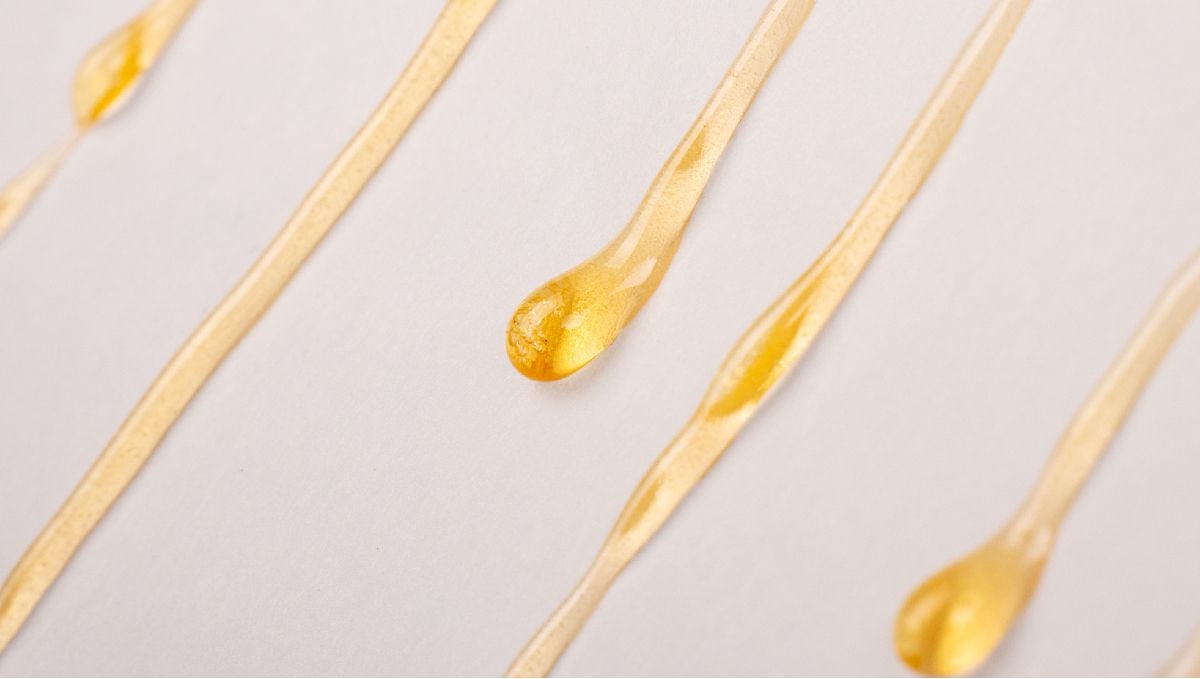
You then press them together and apply some decent pressure for a few seconds. When you open the press, inside you will find a small pool of rosin extract that is ready to be used or stored. What is rosin extract exactly?
When you press the bud between the two heated plates, the trichomes liquify and splurge out from the flower. This liquid is known as rosin extract and can be further refined to remove any plant material resulting in a high-quality concentrate. "Rosin Budder" is another form of rosin extraction where the extract is manually whipped and agitated to produce a light and fluffy wax consistency.
Extraction methods that use solvents
Solvent-based extraction is a process that involves dousing a chemical agent, such as alcohol, butane, or CO2, through the plant material to strip out the trichomes. There are a bunch of different ways this is done, and the end product can range from a thick viscous oil to a light airy wax. Solvent extraction is split into two main groups - Hydrocarbon Solvents (butane, propane, hexane, etc.) and Non-Hydrocarbon or Ethanol Solvents. The main difference is the amount of pressure needed for the extraction to take place. Hydrocarbon extraction methods usually run at 50-150 PSI of pressure, which allows for the trichomes to be totally dissolved which captures the full essence of the plant, while leaving behind all the plant material.
The most common solvent used these days is butane, which is more standardly used as regular lighter fluid. While this may sound a little dodgy (and it certainly can be if not handled correctly), if put through the correct checks and processes the final product is safe for human consumption.
Ethanol extraction doesn't require any kind of system pressurization, and is less flammable than hydrocarbons making the process much less hazardous - but thanks to the positive molecular charge of ethanol, the extraction can capture a bunch of unwanted side products like chlorophyll, and natural fats and waxes that can negatively impact the quality of the final product. And so, for the vast majority of solvent extraction producers, butane is the go-to. This product is referred to as BHO or "Butane Hash Oil". It can come in a wide range of finished forms, with the most common being your everyday dab. But the list of BHO end products is extensive and includes:
- THC Crystalline (THC Diamonds) - the purest forms of cannabis concentrate with up to 99.9% purity
- Wax - The most common form of cannabis concentration currently on the market
- Honeycomb (Pie Crust) - golden and fluffy in texture
- Budder - a softer, oilier, and more viscous type of wax
- Crumble - a brittle version of budder
- Terp Sauce - the terpene-rich liquid that is a by-product of making THC Diamonds.
So, which option is better?
The answer is: it depends. Rosin extraction is generally seen as the safest and simplest way to extract cannabis, with no lingering solvents or chemicals that could harm the user. However, solvent-based extraction methods give a wider range of end products, and as long as the product is processed correctly then there is nothing to worry about.
How about live resin?
Live resin is a type of solvent-based extraction, but with one key difference. Where most solvent-based extractions use dried and cured buds, live resin uses fresh frozen buds for the extraction process. This gives a much more flavorful and aromatic product as the terpenes aren't degraded by the curing process. The downside is that this method requires a lot more plant material, and thus can be much pricier than traditional BHO products. Ultimately, the choice is yours and it depends on your personal preference, so the best idea is to get out there, try everything that's on offer, and find what works for you!
10. In Conclusion
Hash isn’t new at all, this cannabis product has been made and consumed for several thousand years before most of us were even born, even though we have other ways to consume cannabis nowadays, like shatter, moonrocks, or thc diamonds, hashish is still the most consumed cannabis product on the world.
If you have any more information about the history of hashish or some tips you’d like to share with fellow hash makers, feel free to leave a comment in the comment section below!
External References
- Marijuana and hashish: perspectives on cannabis. - Chaléard, Jean-Louis. (2019).
- Hashish traffickers, hashish consumers, and colonial knowledge in Mandatory Palestine. Middle Eastern Studies. - Ram, Haggai. (2016).










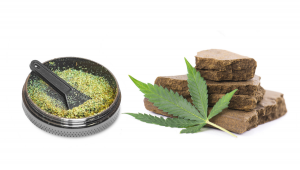
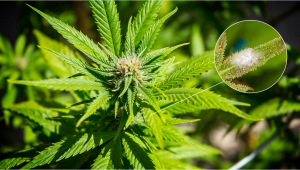



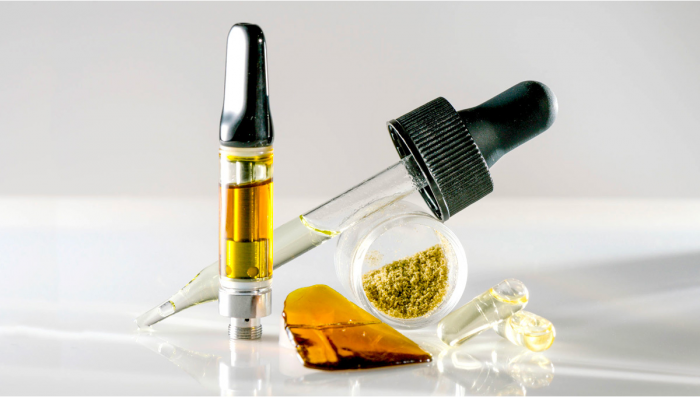
Comments